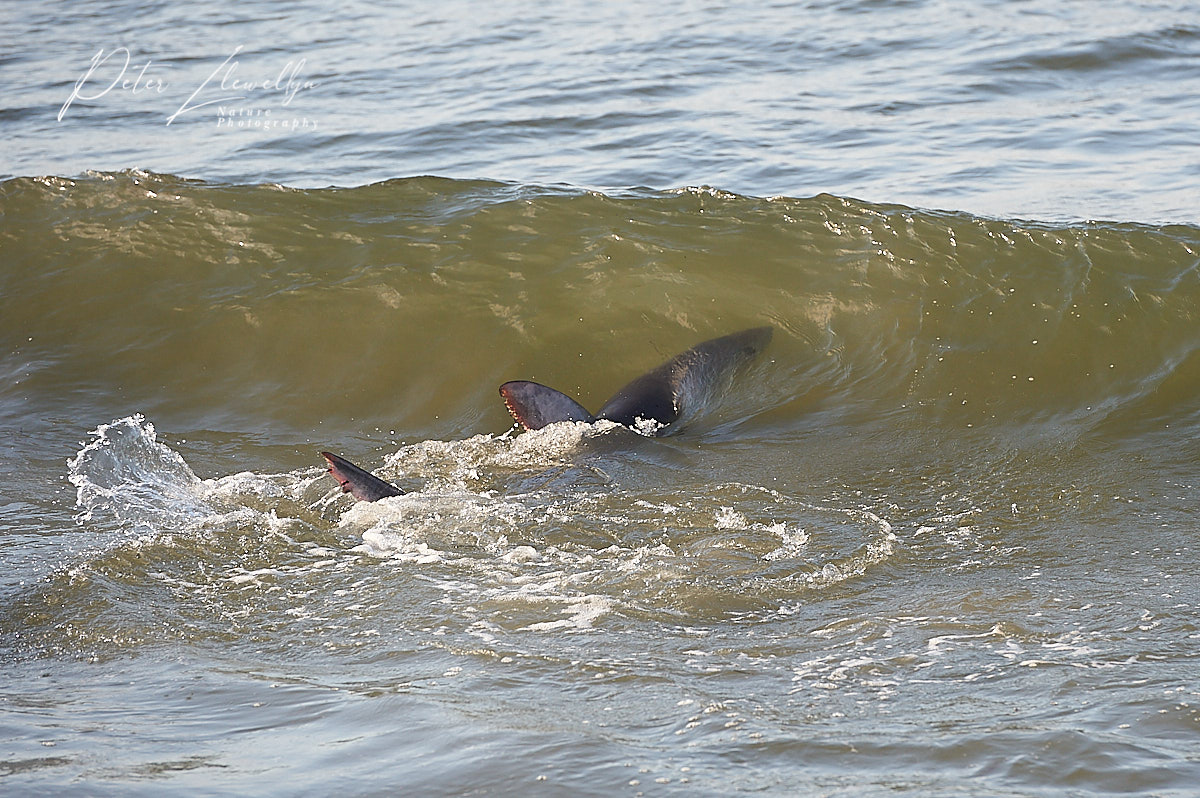
Piping Plover (Charadrius melodus) foraging on beach Cherry Beach, Nova Scotia, Canada
Nikon D3, Nikon 500mm f4 lens + TC14 (700mm), 1/800th sec, @ f7.1 with aperture priority mode with ISO 400, + 1.3 stops exposure compensation
It can be difficult to get frame filling shots, even with the longest of lenses as the majority of shorebirds tend to be nervous, quick movers and relatively small. Maybe this is in part due to their habit of wanting to use the same beaches popular with humans, resulting in constant disturbance from their feeding areas, and, not least by dog owners who find great amusement in allowing their pets to chase the birds.

Semipalmated Plover (Charadrius semipalmatus) foraging along shoreline, Crescent Beach, Nova Scotia, Canada
Nikon D850, Nikon 500mm f4 lens + TC14 (700mm), 1/800 sec, @ f5.6 manual mode with Auto ISO active at ISO 500 with + 1.3 stops exposure compensation from metered value
To stay away from the crowds I get out early and late, coinciding with the best light of the day. The other thing I check out is the state of the tides. High tide tends to be poor as there is little sand and mud for the birds to feed on. Low tide is much more productive and the best of all is when the incoming tide coincides with the early or late period.

Black-bellied Plover (Pluvialis squatarola) foraging along shoreline, Crescent Beach, Nova Scotia, Canada
Nikon D850, Nikon 500mm f4 lens + TC14 (700mm), 1/2500th sec, @ f5.6 manual mode with Auto ISO active at ISO 400
The reason for this is it’s the easiest way to get close action. By getting in position well back from the flocks of feeding birds and getting low to the ground the birds will totally ignore me. Then I just let the incoming tide bring my subjects to me until I am forced to move.
Getting low also gives a much more natural perspective, in fact a birds eye view!

Semipalmated Sandpiper (Calidris pusilla) Cherry Beach, Nova Scotia, Canada
Nikon D3, Nikon 500mm f4 lens + TC14 (700mm), 1/640th sec, @ f8, ISO 800, aperture priority mode, + 2/3 stop exposure compensation from metered value off wet sand
Identification of shorebirds can be a real challenge, especially at this time of year when breeding plumage is being shed for their winter look, many of the birds now looking incredibly similar. One should make a habit of making a note of behaviour of each of your subjects as you shoot them, especially when working with mixed flocks. The relative size of each species is much easier to determine when they are stood close rather than in trying to determine the size of a single bird in a photo. I highly recommend ‘The Shorebird Guide by O’Brian, Crossley and Karlson’ for help in identifications as this book attempts to provide details on each different plumage and between the sexes.
Birds in flight
For shorebirds in flight I have given up trying to work from a tripod. They move so fast that it’s almost impossible to keep them individual birds in the frame, although much easier when shooting the vast flocks that can form.

Willet (Catoptrophorus semipalmatus), in flight, Cherry Hill Beach, Nova Scotia, Canada
Nikon D3, Nikon 500mm f4 lens + TC14 (700mm), 1/1250 sec, @ f8, ISO 400, aperture priority mode, + 1/3 stop exposure compensation from metered exposure off sea
I handhold the Nikon 500mm, both with and without the TC-14 converter. The Nikon D850 bodies I am now using are remarkably accurate at locking on to these fast moving subjects and retaining focus. Use a fast shutter speed, keep your vibration reduction turned on, and swing the lens rapidly with the subject, ensuring you keep the lens moving the whole time you are shooting.
For fast moving birds in flight I keep a minimum shutter speed of 1/2000th second, stop down to f5.6 to give a little extra depth of field and use auto ISO in manual mode to ensure my shutter speed does not drop. In fact, I am finding myself using auto ISO more and more.

Mixed flock of shorebirds in flight Cherry Hill Beach, Nova Scotia, Canada
Nikon D850, Nikon 500mm f4 lens, 1/1600th sec, @ f5.6 manual mode with Auto ISO active at ISO 200
When setting out to the beach for shorebirds you need to be ready for other subjects that may suddenly present themselves a couple of days ago I was heading over the stone berm leading to Cherry Hill Beach when a sudden flurry of movement in the water attracted my attention. This turned out to be a Blue Shark in the surf right up by the beach. You just never know what might turn up!

Blue Shark (Prionace glauca) in surf close to beach, Cherry Hill Beach, Nova Scotia, Canada
Nikon D3, Nikon 70-200 f2.8 lens, at 200mm, 1/1000th @ f5, ISO 800, aperture priority automatic
Workshop news
I will soon be announcing the first workshop series since I have arrived in Nova Scotia. These will include classroom workshops for post-production work using Lightroom, Capture One and Photoshop and the always popular ‘digital workflow’ where you will learn the complete process involved for every one of my images from camera to final archive. Spring 2020 will see several practical ‘in the field’ workshops learning a variety of photography techniques.
To see a wider selection of new photos go to the Recent Images gallery. This is updated regularly.
Sign up to receive notifications of future blog posts



